Gardens are more than just spaces for growing plants—they are expressions of creativity, personality, and style. Among the many innovative ways to design a garden, repurposed furniture flower beds stand out as one of the most imaginative and eco-friendly trends. By giving old furniture a second life, gardeners can add character, sustainability, and charm to their outdoor spaces. From vintage dressers to old bathtubs, unused furniture pieces can be transformed into stunning planters that blend functionality with artistry.
In this article, we’ll explore the benefits, design ideas, and practical tips for creating repurposed furniture flower beds that turn ordinary gardens into extraordinary spaces.
Why Choose Repurposed Furniture Flower Beds?
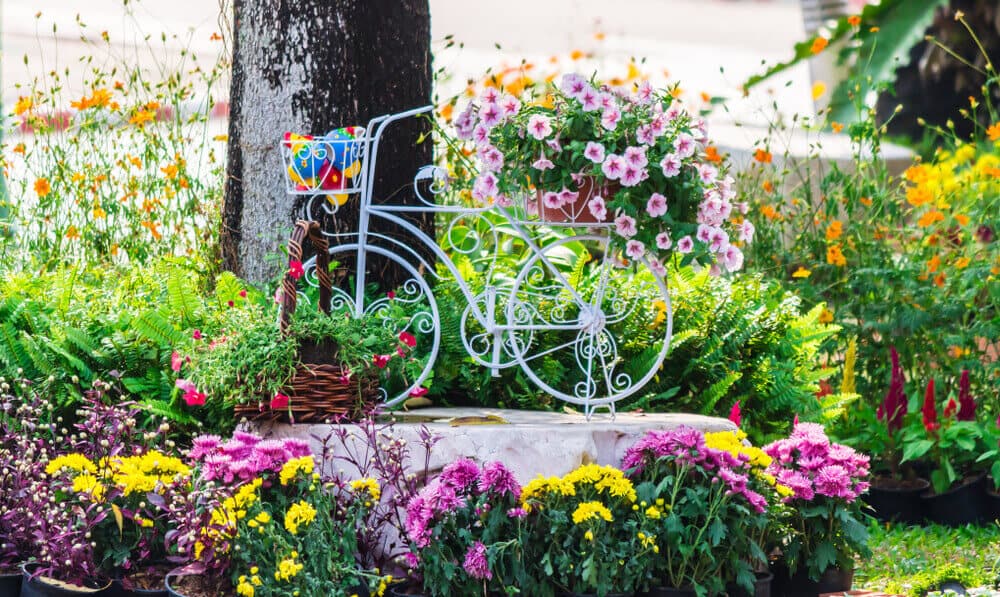
1. Sustainability and Eco-Friendliness
Repurposing furniture reduces waste and promotes recycling. Instead of throwing away an old chair, dresser, or crib, you can transform it into a vibrant planting container. This reduces landfill waste while giving your garden a unique design element.
2. Creativity and Personalization
Every piece of furniture tells a story. When converted into a flower bed, it adds a personalized, whimsical touch to your garden. Unlike standard planters, repurposed furniture can be customized with paint, carvings, or creative arrangements.
3. Budget-Friendly Design
Buying new planters can be expensive, but reusing old furniture saves money. With a little creativity and effort, you can craft flower beds at almost no cost, aside from soil and plants.
4. Conversation Starters
Repurposed furniture flower beds always grab attention. Whether it’s a wheelbarrow bursting with blooms or a dresser overflowing with trailing vines, they create focal points that impress guests.
Popular Repurposed Furniture Flower Bed Ideas
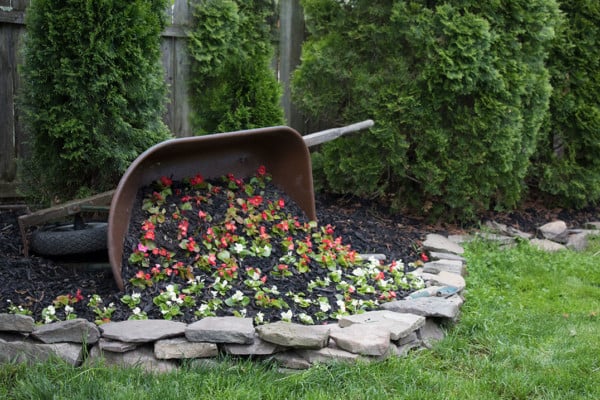
1. Vintage Dressers as Planters
Old dressers are a favorite choice for DIY garden enthusiasts. Simply pull out the drawers at different angles, line them with landscape fabric, and fill them with soil and flowers. The cascading effect creates a layered look, perfect for trailing plants like petunias, ivy, or nasturtiums.
2. Chairs with Floral Seats
Broken chairs with missing seats can be fitted with baskets or pots. Paint the chair for a shabby chic or rustic look, and let colorful blooms like pansies, geraniums, or marigolds brighten the space. A cluster of chair planters can make a charming garden corner.
3. Old Bathtubs and Sinks
Bathtubs, sinks, and washbasins make excellent large containers. These pieces are ideal for growing bigger plants, like ornamental grasses, dahlias, or even small shrubs. Their depth allows for strong root development, while their vintage appeal adds a touch of nostalgia.
4. Bookshelves and Cabinets
Outdoor bookshelves or cabinets can be transformed into vertical flower beds. Each shelf can host a different variety of plants, creating a multi-tiered display. Succulents, herbs, and compact flowers thrive in these setups.
5. Bed Frames as Garden Borders
Old metal or wooden bed frames can be turned into garden borders or raised beds. By lining them with soil and filling the interior with plants, you create a “garden bed” that is both literal and whimsical.
6. Repurposed Cribs for Flower Beds
Baby cribs that are no longer in use can be converted into charming garden beds. With their railings, they make excellent enclosures for climbing flowers or vines, like morning glories or sweet peas.
7. Suitcases and Trunks
Vintage suitcases add a travel-inspired charm to gardens. They work beautifully as portable flower beds. By lining them with plastic or landscape fabric, you can grow compact flowers, succulents, or herbs inside them.
8. Wheelbarrows and Carts
Old wheelbarrows and carts are naturally suited for gardening. Their mobility makes them easy to move around the yard, and their rustic charm works well with wildflowers or cascading blooms.
Choosing the Right Plants for Furniture Flower Beds
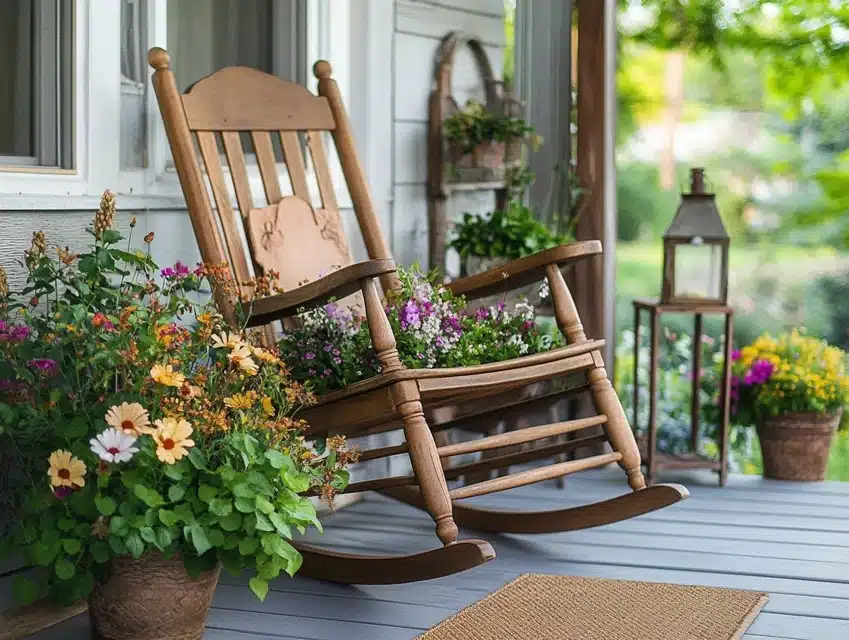
Since repurposed furniture varies in depth and size, plant selection is important:
- Shallow drawers, suitcases, or chairs – Best for succulents, pansies, alyssum, and herbs.
- Deep bathtubs or sinks – Perfect for dahlias, zinnias, or even dwarf shrubs.
- Tall cabinets or shelves – Great for vertical gardens with cascading plants like ivy, vinca, or lobelia.
- Portable furniture like wheelbarrows – Excellent for mixed seasonal flowers you can relocate as needed.
When selecting plants, also consider sunlight availability, drainage, and maintenance needs.
Practical Tips for Creating Furniture Flower Beds
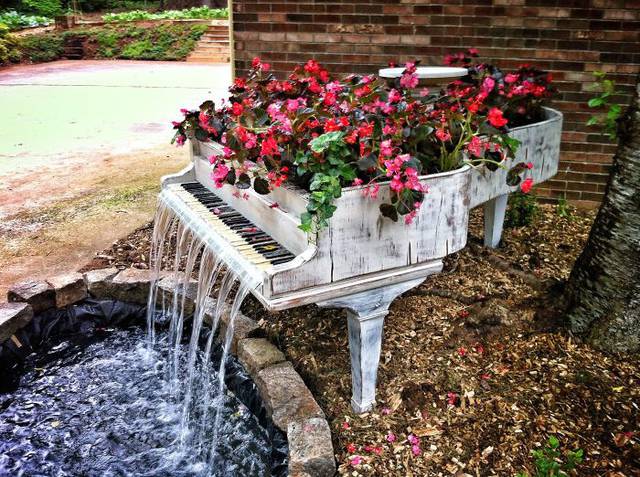
- Ensure Proper Drainage
Most furniture isn’t designed to hold soil and water, so drilling holes or adding gravel at the bottom is essential to prevent root rot. - Use Liners
To protect wooden furniture from rotting, line drawers, shelves, or cribs with heavy-duty plastic or landscape fabric. - Weatherproofing
If the furniture will be outdoors year-round, apply a waterproof sealant or outdoor paint to extend its lifespan. - Balance Aesthetics and Function
Consider the furniture’s original design and enhance it with complementary flowers. For instance, a rustic dresser pairs beautifully with wildflowers, while a sleek bathtub looks stunning with ornamental grasses. - Maintenance
Regularly check for wood decay, rust, or pest infestations. Since furniture may not last as long as traditional planters, occasional touch-ups or replacements may be necessary.
Advantages of Using Repurposed Furniture in Garden Design
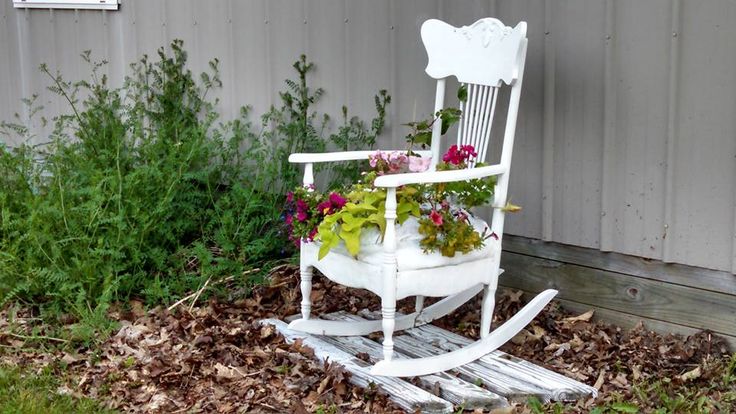
- Unique Style – No two furniture flower beds look alike. Each piece adds individuality.
- Eco-Conscious Gardening – Reduces landfill waste and supports upcycling.
- Flexibility – Easily movable, especially with carts, chairs, or wheelbarrows.
- Creative Freedom – Allows gardeners to experiment with unusual designs and colors.
Inspiration: Creating Themes with Furniture Flower Beds
- Cottage Garden Look – Use painted dressers, vintage chairs, and overflowing blooms.
- Rustic Farmhouse Style – Incorporate wooden crates, barrels, and wheelbarrows with earthy plants.
- Modern Eclectic Vibe – Pair sleek furniture pieces with structured geometric plants.
- Whimsical Storybook Theme – Repurpose old toys, dollhouses, or tiny furniture for fairy gardens.
Conclusion
Repurposed furniture flower beds prove that creativity and sustainability can go hand in hand. By transforming old dressers, chairs, bathtubs, or wheelbarrows into vibrant planters, gardeners can add character and eco-friendly charm to their outdoor spaces. Not only do these designs reduce waste, but they also provide unique focal points that spark joy and conversation.
Whether you prefer rustic charm, vintage nostalgia, or playful whimsy, repurposed furniture flower beds bring imagination to life in the garden. With thoughtful plant choices, proper drainage, and a touch of creativity, any old piece of furniture can be reborn as a stunning, living work of art.
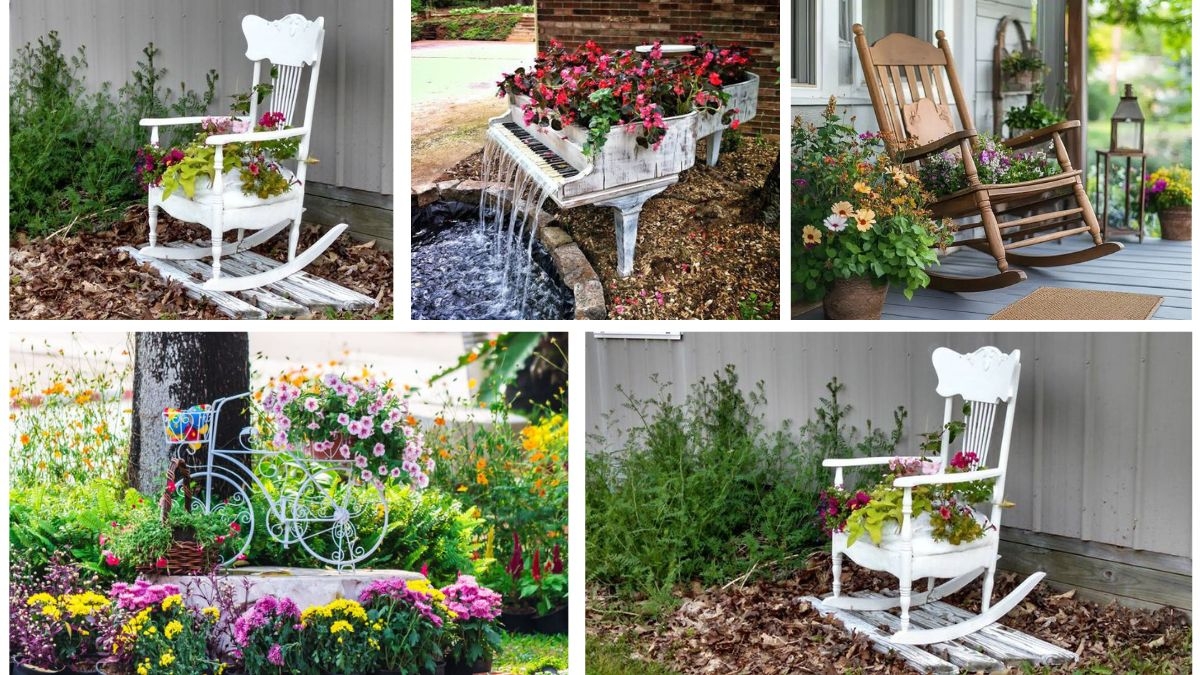

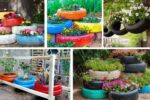
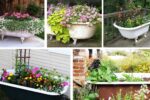
Leave A Comment